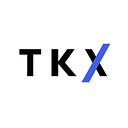Surge: Lending Pool for All Asset Class | TKX Weekly
by @Guaaronnnn
editor @FriedWagyuu
Although the cryptocurrency market is worth over a trillion dollars, the reach of DeFi lending platforms remains limited as they mainly support highly liquid tokens. Many tokens, such as long-tail assets, LP tokens, NFTs, and vault tokens, are sidelined due to the challenges of finding reliable, stable prices that are immune to manipulation. Today we are going to explore a protocol which allows all kinds of tokens to be used for loans and as collateral — Surge.
Intro
Surge is a fully self-governing and decentralized lending protocol that is poised to revolutionize the DeFi lending space. It accommodates all non-rebasing tokens compliant with ERC20 standards for lending and borrowing operations. It is permissionless, oracleless, adminless, and non-upgradable. This means anyone can use it, and it doesn’t rely on price oracles or admins.
How it works
Surge allows users to permissionless-ly launch lending pools for tokens with parameters including:
- Loan token
- Collateral token
- Collateral ratio
- Surge threshold(Max utilization rate)
- Interest rate model
Most lending protocols use an oracle to monitor the price of collateral and the loan-to-value threshold for liquidation. However, Surge uses a unique method to manage loans. To keep things balanced, it gauges changes in liquidity through the Algorithmic Collateral Ratio and Surge Threshold, achieving the same purposes.
Algorithmic Collateral Ratio
This dynamic collateral ratio is determined by the utilization rate over time, rather than by price feeds. It will be referred to as the Collateral Ratio.
Please note that Surge’s Collateral Ratio differs from the general CR, which is calculated based on asset value. Instead, Surge’s CR refers to the number of loan tokens that can be borrowed per collateral token. Surge’s CR is independent of asset prices. Borrowers are not limited based on the value of their collateral/assets, but rather on the number of collateral tokens they deposit.
For example, with a maximum collateral ratio of 30:1, a borrower can borrow up to 30 units of loan tokens for every 1 unit of collateral tokens they provide.
Surge Threshold
This is a utilization rate threshold at which the pool collateral ratio gradually begins to decline. Utilization rate is the measurement of the number of tokens being borrowed relative to the number of tokens being supplied.
Collateral ratio vs. utilization rate
Although the collateral ratio is independent of the asset value, the liquidation process still works when asset prices go down.
If asset prices decrease, lenders should respond by reducing liquidity to avoid lending out more value than is collateralized. As lenders leave the pool and supply decreases the pool’s utilization rate increases. The surge threshold is set when the pool is created and represents the utilization rate at which pool parameters are set. If a pool’s utilization rate exceeds the surge threshold, the collateral ratio will decrease linearly, and interest rates will rise. When the collateral ratio starts falling, borrowers can either repay their loan or deposit additional assets as collateral to avoid liquidation.
Once a pool’s utilization rate drops below the surge threshold, the collateralization ratio (CR) begins to slowly increase back to the pool’s maximum CR in a linear manner. If a pool’s CR falls to zero due to an extended surge state, then all borrowers in the pool will be liquidated. This ensures that the pool maintains sufficient liquidity to allow suppliers to exit.
Pools
Pool deployers have complete control over setting pool parameters. Once a new pool is deployed, no one can change its parameters.
Final thoughts
Surge’s innovative Algorithmic Collateral Ratio allows lending markets to incorporate different tokens, including long-tail assets. However, the isolated pair model has limited liquidity and faces fragmentation issues. To address this, Surge plans to add a supply-side aggregation layer on top of Surge pools. Lenders can choose to provide liquidity directly into individual Surge pools or aggregate their deposits into vaults with limited managerial roles.
Recently, Surge was deployed on Arbitrum, making it worth keeping an eye on.
Reference
https://medium.com/surge-fi/introduction-to-surge-protocol-overview-34cc828d7c50
https://docs.surge-fi.com/
About TKX CAPITAL
Website: TKX.CAPITAL
Twitter: @TKXCAPITAL
Build with us: HI@TKX.CAPITAL
Note: TKX CAPITAL do not offer any financial advice for retail investors.
